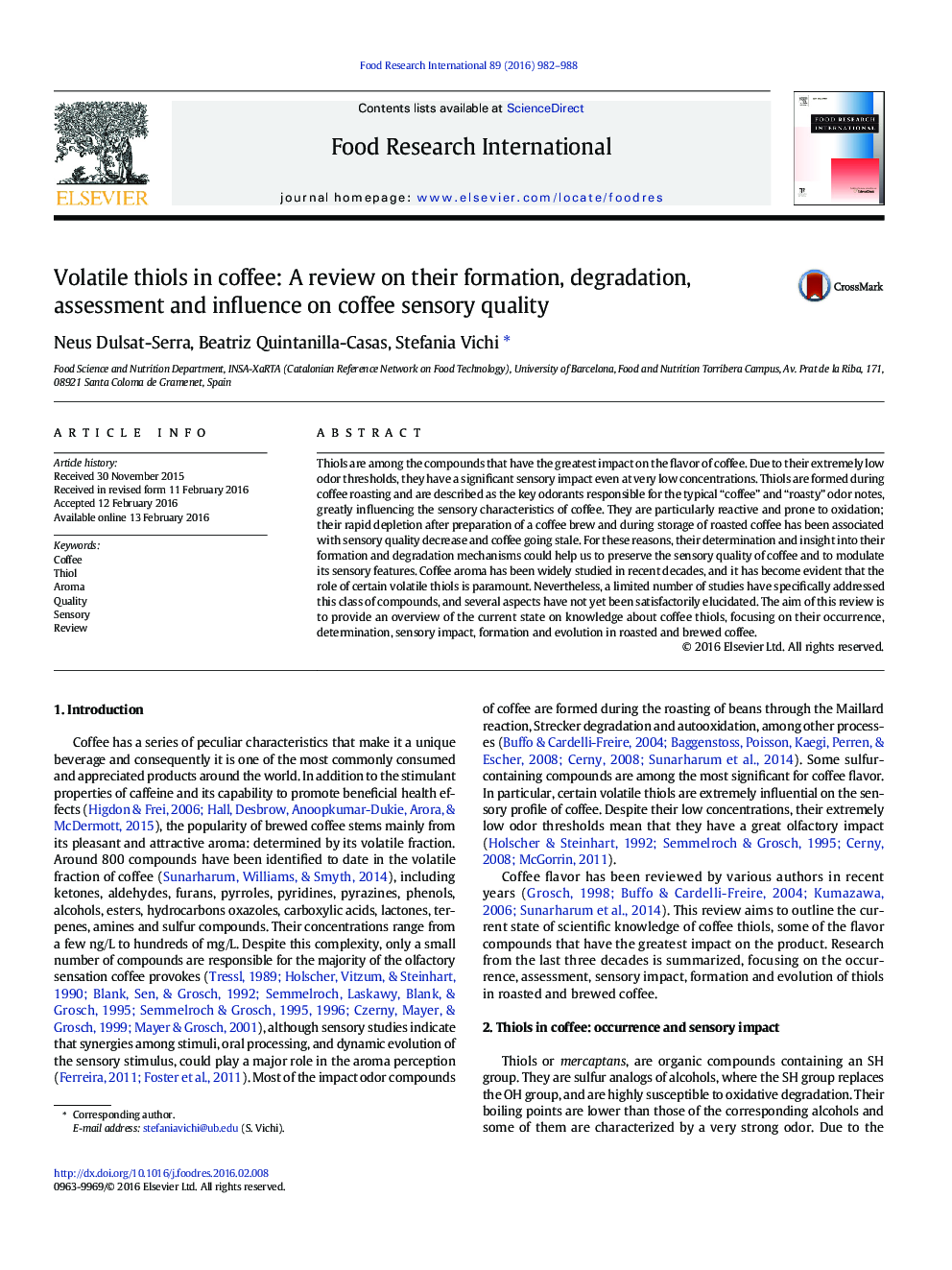| Article ID | Journal | Published Year | Pages | File Type |
|---|---|---|---|---|
| 5768335 | Food Research International | 2016 | 7 Pages |
â¢The occurrence of volatile thiols in coffee and their sensory impact were reviewed.â¢Thiol formation and degradation mechanisms in coffee were considered.â¢Analytical methods for coffee thiols analysis were summarized.â¢The effect of various factors affecting thiol presence in coffee was reported.
Thiols are among the compounds that have the greatest impact on the flavor of coffee. Due to their extremely low odor thresholds, they have a significant sensory impact even at very low concentrations. Thiols are formed during coffee roasting and are described as the key odorants responsible for the typical “coffee” and “roasty” odor notes, greatly influencing the sensory characteristics of coffee. They are particularly reactive and prone to oxidation; their rapid depletion after preparation of a coffee brew and during storage of roasted coffee has been associated with sensory quality decrease and coffee going stale. For these reasons, their determination and insight into their formation and degradation mechanisms could help us to preserve the sensory quality of coffee and to modulate its sensory features. Coffee aroma has been widely studied in recent decades, and it has become evident that the role of certain volatile thiols is paramount. Nevertheless, a limited number of studies have specifically addressed this class of compounds, and several aspects have not yet been satisfactorily elucidated. The aim of this review is to provide an overview of the current state on knowledge about coffee thiols, focusing on their occurrence, determination, sensory impact, formation and evolution in roasted and brewed coffee.
